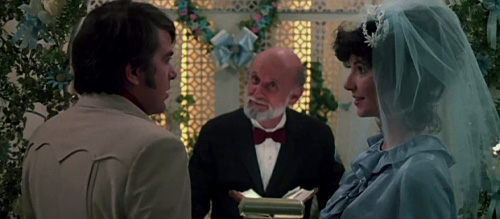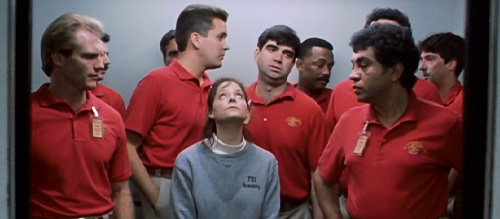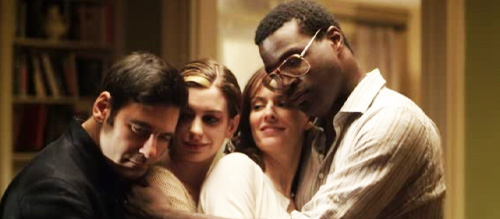Where to Start with Jonathan Demme
Jonathan Demme’s work is an exercise in vibrant but tonally sincere filmmaking; exploring a range of genres and taking risks where others would be apprehensive. Throughout his varied career, what has always been made abundantly clear is the tenacious dedication he has towards the craft. No film under his instruction was made half-heartedly, with every documentary, television show, and feature film having a heavy ounce of gravitas behind it, instigating a personable touch across his work.
It was legendary director Roger Corman who first saw that spark in Demme, asking him to co-write a motorcycle movie with Joe Viola. Angels Hard as They Come (1971) ignited Demme’s career, with his signature flare seeping onto the surface via his exuberant writing style. The exploitation flick is packed with eclectic debaucheries that combine raunchiness with a knowing sense of humour that works to compliment the blitzkrieg of themes rather than shy away from the full-throttle narrative.
Whilst Demme would go on to explore more stoic strains of film, what remained a consistent feature amidst his filmography is the witty artistry that encased even the sternest of topics with a touch of imaginative flair.
Narrowing down Demme’s eighteen feature films stirs up a tidal wave of rambunctious picks, with nearly every option bringing something new, exciting, and certainly unexpected to the table. That’s why here at The Film Magazine we have meticulously curated the ultimate guide on Where to Start with Jonathan Demme.
1. Melvin and Howard (1980)

After Jonathan Demme had begun to make a name for himself, he introduced Melvin and Howard, an unconventional rag-to-riches tale that sketched out a cosy spot for Demme’s darkly comedic touch to thrive. The film chronicles the happenings of a dishevelled American dream, following the penniless but hopeful Utah man Melvin Dummar (Paul Le Mat) on his quest for a greater life. The touches of classic road-movie self-discovery marry with the sympathetic tone Demme emphasises through Melvin’s outlook on life.
Melvin and Howard enlists the wild sensibilities that Jonathan Demme gained from his early filmmaking days in the 1970s, with the likes of Caged Heat (1974) and Crazy Mama’s (1975) off-kiltered charm and tyrannical chaos easing into the diegesis of Melvin and Howard.
The film both warms and confronts. Demme goes heavy on the humour throughout the whole film, infusing each scene with a slightly irreverent charm. Yet, the pinnacle of westernised woes surrounding the US financial crashes and rise in consumerism are not lost on the nonchalant quick wit displayed throughout.
Melvin and Howard is a fantastic starting points to explore what Jonathan Demme has to offer.
2. The Silence of the Lambs (1991)

Jonathan Demme would often express the great admiration he experienced from critics and fans as being an honour, always being honest and humble about the acclaim. During his acceptance speech for Best Director at the 1992 Academy Awards, he admitted that prior to filming award-smashing films, he was at a “low valley moment”. However, when Thomas Harris’ 1988 novel “The Silence of the Lambs” was introduced to him, Demme felt a spark, a feeling of ‘knowing’. He had to adapt this amazing novel.
Jonathan Demme is a living testament that filmmaking is not an easy ride where directors make one film that then keeps them at the top of the ladder for the rest of their careers. Instead, it is filled with ups and downs. One of Demme’s films that brought him back into the game was The Silence of the Lambs.
Each one of this great filmmaker’s films speaks for itself, with The Silence of the Lambs taking this expression to the extreme. The film is densely packed with motifs and titbits that highlight the ‘bigger picture’. Across the film, FBI trainee Clarice Starling (Jodie Foster) has to continuously prove her ability, with much of the contemporary commentary on The Silence of the Lambs surrounding Starling’s role in a male-dominated industry. Demme would display this discourse in the most subtle of ways. For example, the opening scene ends with Starling entering an elevator surrounded by her male colleagues. The frame is painted in red, white, and blue tones. Denoting the triptych palette to the American flag and its patriarchal meanings within the police force. Demme knew how to insert meaning in his work, commenting upon the greater issues at hand and richly infusing thoughtfully composed social commentary.
This mightily powerful film is considered one of the all-time greats for a multitude of reasons, particularly the enigmatic performances. Demme has this unique charm of creating such rich scenes, in-depth cinematography, and thoroughly captivating backdrops that allowed both the scenery and performances to equally shine. Foster and Anthony Hopkins light the screen up with boastful spirited energy that aids in digging right under the skin of its fearful viewer and enhancing the dreadfully eerie storyline.
3. Rachel Getting Married (2008)

When describing Jonathan Demme’s authorial status, it would be easy to strictly focus on the big grand slams from his career. And whilst Rachel Getting Married went on to receive bountiful admiration and an Oscar nomination for Anne Hathaway, the film has become somewhat overshadowed in recent years. Demme is known for his enthusiasm for every strain of filmmaking, delving into the likes of documentary filmmaking just as much as his fictional storytelling. Rachel Getting Married is a perfect example of Demme’s eye for real-life amalgamating with fiction film.
Rachel Getting Married takes a slice-of-life approach as we follow Kym Buchman (Hathaway), coming to terms with her addictions whilst preparing to attend her perfect sister Rachel’s (Rosemarie DeWitt) wedding. Rachel Getting Married shows the brutalism of addiction, both for its affecting victim and their surrounding family, with no scene being too shy to step into the uncomfortable territory of familial disputes. To expose the contentious strains of domestic disarray, Demme uses the lens as an exploitative tool, where every close-up, zoomed-in angle infringes upon the personal space of the characters and makes the journey all the more personal.
A common theme running throughout Demme’s entire filmography is how expressive the visuals are. Every frame is besieged by its own personality as if the film is a canon for kinetic imagery to thrive. One of the prime examples of this in Rachel in Getting Married is the energetically charged camera that infringes upon the aesthetics of documentary iconography, akin to the same deadpan expressionism seen in the likes of ‘The Office’ (2005-2013). During a particularly fragile moment of the film when a family argument becomes heated, Demme sways the handheld camera back and forth as if he was taking on the viewer’s gaze, darting their eyes across the frame to absorb every inch of the drama possible.
Recommended for you: Where to Start with Paul Verhoeven
Whether it’s the touching hilarity seen in Melvin and Howard, the tense dread felt in The Silence of the Lambs, or the adult coming-of-age story in Rachel Getting Married, Jonathan Demme always knew how to reach out beyond the screen and speak to each of us.

